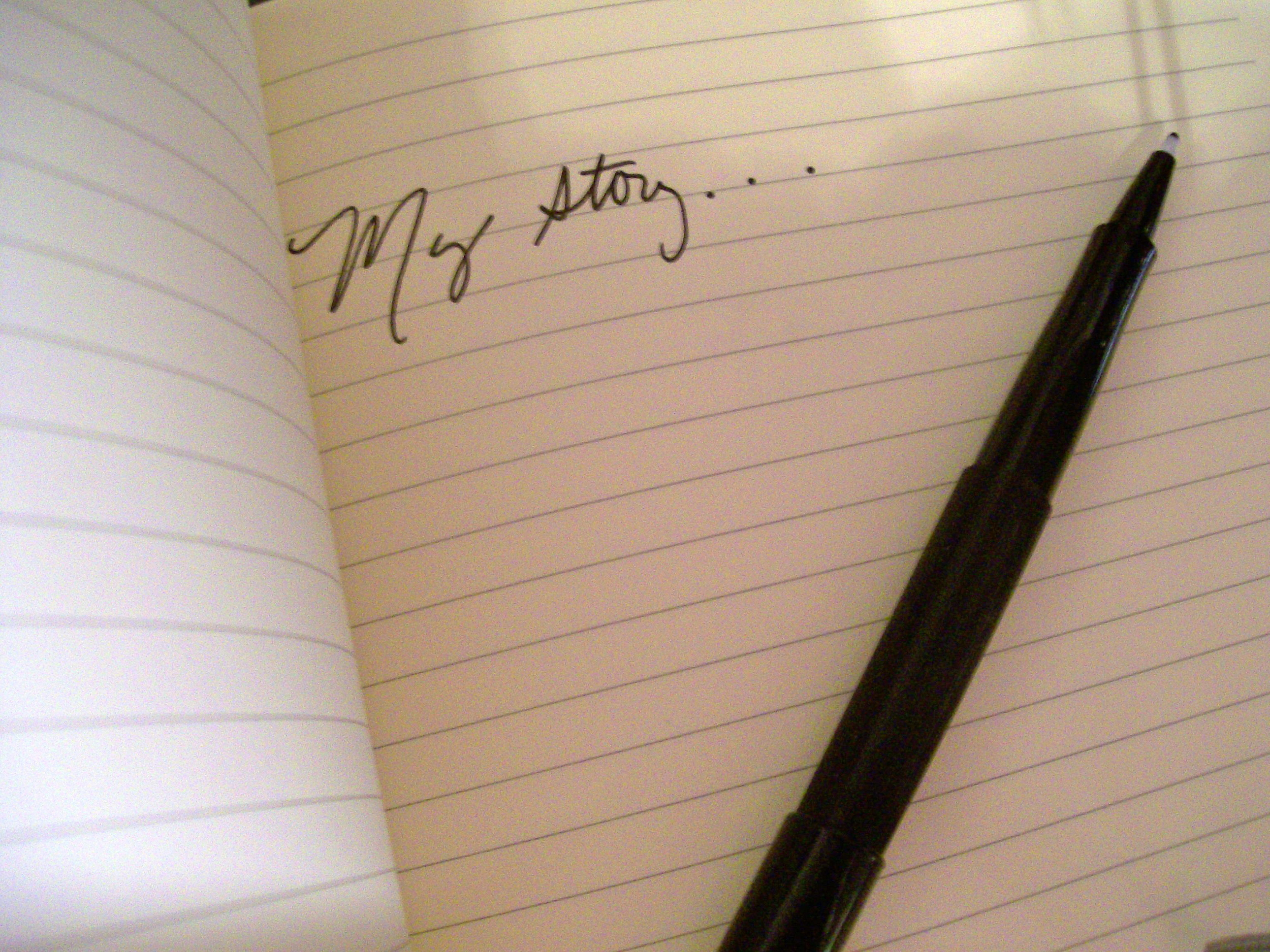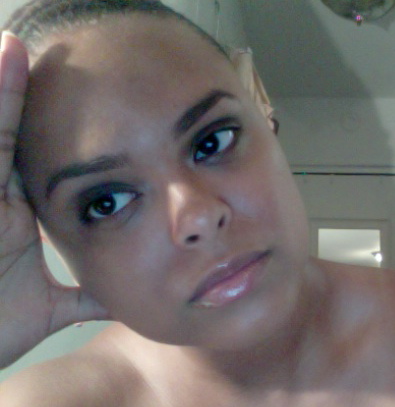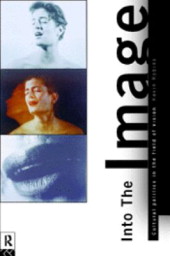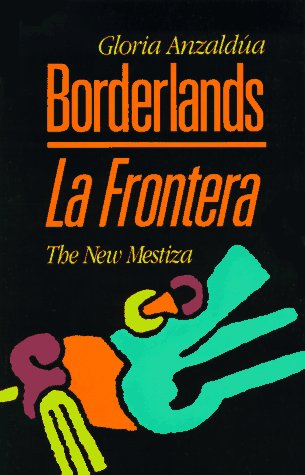The Evolution of a Definition: The ONL-OFL Continuum
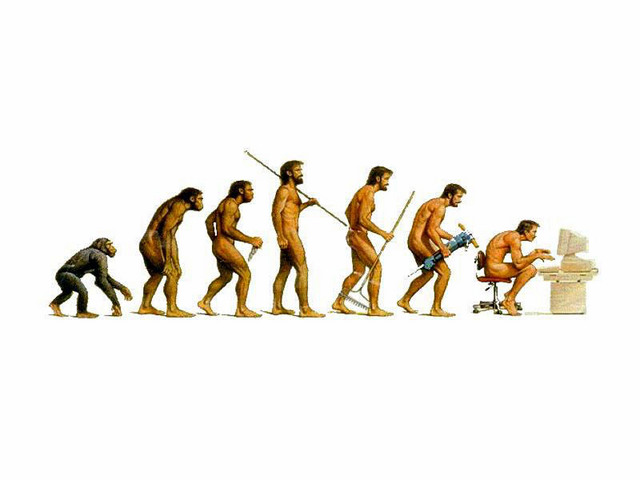 I thought it would be useful to compile all of the working definitions for the Online-Offline Continuum (ONL-OFL) that I've been developing over the past year and a half. It all started in my "Social and Communicative Aspects of the Internet" class during the fall of 2010...
I thought it would be useful to compile all of the working definitions for the Online-Offline Continuum (ONL-OFL) that I've been developing over the past year and a half. It all started in my "Social and Communicative Aspects of the Internet" class during the fall of 2010...
2010
Draft 1
The online/offline continuum is defined as an interactive and communication phenomenon characterized by the distribution of identities and social practices that shift between computer and non-computer mediated environments.
Draft 2
I define the online/offline continuum as an interactive and communication phenomenon that is characterized by the distribution of identities[1]and social practices that shift between computer and non-computer mediated environments.
[1] Sam Han reviews the history of Internet studies scholarship in his upcoming publication "Virtual Identities: From Decentered to Distributed Selves". I consider Han one of several scholars of an emerging new wave of scholarship that address the online/offline continuum. He suggests that we rethink assumptions about commonly held beliefs of virtual identity as disembodied and consider the process of identity construction as a sort of convergence (p. 25). In this analysis, I further introduce the concept of distributing identities as a way of understanding virtual identities in the future. Whether or not this conception proves meaningful to the scholarship is yet to be seen since further investigation is required.
2011
'Online' and 'offline' are not as distinct spheres, but may be conceptualized as a continuum of identities and socio-cultural practices across time, space, and of both computer-mediated and non-computer mediated interactions.
2012
Draft 1
I coin the term online-offline (ONL-OFL) continuum to describe a type of movement that shifts between computer (or machine)-mediated and non-computer (or non-machine)-mediated environments. As I describe this phenomenon, I am also arguing that the ONL-OFL continuum explains a theory of movement between and among networks across computer (or machine)-mediated and non-computer (or non- machine)-mediated environments.
Furthermore, it must be noted that the ONL-OFL continuum describes one type of movement of one type of network process between computer-mediated (or machine) and non-computer (or non-machine) mediated environments. Networks are a plural concept. For this reason, it is nearly impossible to present a single theory for the movement of all networks, since so many exist simultaneously, side-by-side, within and without each other. As well, movement of the ONL-OFL continuum, therefore, describes plurality of motion. Like with some articulations of theory, the ONL-OFL continuum seeks to explain a phenomenon of movement from multi-dynamic socio-cultural and communicative perspectives, which cannot be necessarily defined through typology, nor can it be absolutely traced if not for “things” also moving within an organized social space (Latour, 2005).
Current definition (2012)
The ONL-OFL Continuum describes what happens when our selves move, as well as describes the practices that constitute our selves moving within and among computer mediated and non-computer mediated contexts. Additionally, the ONL-OFL Continuum says that ‘connected’ realities inform ‘disconnected’ realities, and vice versa, and as such may very well result in the (re)shaping, (re)making, and co-construction of experiences across contexts.
It's worth noting that my ideas about movement (i.e. shifting and tracing) and being marked evolved once I began to ground them in the works of others like Bruno Latour and Gloria Anzaldua. This past year I've devoted a significant amount of brain power to fleshing out what it means to shift while allowing myself to be verbose for the sake of simply getting the ramblings out of my head. I think it's useful for anyone working on ideas to keep track of how they evolve. At this point, I'm more confident exploring ideas about movement and being marked as it relates to the ONL-OFL Continuum because folks like Leander and McKim (.pdf) and others have already been talking about the notion of tracing in the Latourian sense to frame concepts.
I'm currently re-reading Anzaldua's essay "now let us shift" (.pdf) in search for better grounding to further my discussions about being marked by trauma while shifting within/among 'connected' and 'disconnected' realities. I'm in the process of finishing a draft for an upcoming anthology in which I will take a more narrative approach to discuss how being marked by the trauma of confronting my late father in so-called 'cyberspace' both informs and is informed by the experiences I (re)member (as in re-organize and re-call) with him in 'disconnected' reality. Some argue that the traumatic dimension is a characteristic of the Lacanian 'Real'--i.e. that too strong, too intense Reality that can never really be experienced and instead is repressed through our everyday reality, also known as fantasy. This idea fascinates me because I believe we can and do experience the traumatic dimension while shifting in/among online and offline contexts as evident when we confront loved ones who have passed away yet still 'exists' via social networks, blogs, and online videos. Other ways I intend to continue exploring the notion of being marked by trauma, which is characteristic of the ONL-OFL Continuum, includes cyberbullying, 'cyber' racism, sexism, and sexual exploitation. Admittedly, I need to better familiarize myself with Lacan to see if I'm on the right track with his ideas. Nonetheless, I do believe there is a connection between trauma and being marked while shifting within/among computer mediated and non-computer mediated contexts. More on that in a latter post.
Ciao for now.
If anyone out there reading this would like to expand on my ideas or use them in other contexts, please be kind to cite my developing work:)
Introducing the Online-Offline Continuum (A Work in Progress)
I’ve recently noted various conversations and approaches that discuss the online/offline phenomenon. Some of the questions I’ve come across about the phenomenon concern naming it and articulating how it might shape and change the worlds we live in. Questions regarding how we articulate online/offline experience, interaction, and/or movement, and how we describe the “affirmation that the Web is not a separated sphere from our reality” rely heavily upon our ability to see outside of a phenomenon that is impossible from which to separate ourselves. Most researchers, scholars, and philosophers would probably agree that articulating the online/offline phenomenon is daunting task, and yet terribly necessary in order to understand ourselves and our futures at this moment. Naming “it”
During my search to find how others are naming the phenomenon, I came across terms like "augmented reality" and "augmentism" quite often. According to Mr. Teacup (Internet persona), we might call the phenomenon of online/offline interaction, augmentism, or the idea that “new technologies are extensions to our existing reality”. Another writer, Nathan Jurgenson of Cyborology, argues that the phenomenon is “co-constructed” and that “the digital and physical are increasingly meshed. It is, in other words an implosion of “atoms and bits [called] augmented reality”. Without so much naming it as describing it, communication scholar, Manuel Castells, recently stated in an interview with UOC that "nobody who is on social networks every day is the same person. It's an online/offline interaction, not an esoteric virtual world”.
It’s comforting to see more discussions about (re)naming the phenomenon since conversations about the separation of online (i.e. fake) and offline (i.e. real) worlds have long shaped views about our relationship to computer-mediated technologies. As the authors above imply, these dualistic narratives are inherently false and misleading. In an era where offline practices and affiliations impact online interactions and vice versa, it is time to not only propose but also push for alternative ways of understanding how our ‘connected’ and ‘disconnected’ lives shape who we are and the worlds around us.
For the past two years now, I have also been trying to articulate the phenomenon by naming it. Implicit in my idea are theoretical discussions about tracing and shifting from theorists, Bruno Latour and Gloria Anzaldua, respectively. To date, I am unaware of anyone using these two thinkers hand-in-hand to explore the phenomenon of shifting and tracing in and among online and offline contexts. Separately, however, people have cited both thinkers’ work to examine the World Wide Web (WWW) and social theory. Lisa Nakaura applies Anzaldua’s mestiza consciousness to critique the reification of identity categories on the Internet in her chapter, “Menu-Driven Identities: Making Race Happen Online”. Ulises Mejias, a graduate of CCTE (the doctoral program in which I an currently enrolled) applies Latour’s critique of the social to examine social software. While Anzaldua and Latour, in my opinion, complement each other, their ideas are unfortunately presented as worlds apart in academia since Anzaldua’s ideas have been used to theorize identity and Latour’s ideas used to critique social theory. As a graduate student of women’s studies and current doctoral student in communications, I hope to marry these two thinkers in academia by applying their ideas to my work here.
Expanding on the works of Latour and Anzaldua, I propose a new naming of online/offline phenomenon:
The ONL-OFL Continuum describes what happens when our selves move, as well as describes the practices that constitute our selves moving within and among computer mediated and non-computer mediated contexts. Additionally, the ONL-OFL Continuum says that 'connected' realities inform 'disconnected' realities, and vice versa, and as such may very well result in the (re)shaping, (re)making, and co-construction of experiences across contexts.
With the ONL-OFL Continuum, I take to task issues concerning movement, i.e. shifting and tracing, and subsequently, marking. I argue that if we can 1) identify these shifts and traces, and then 2) probe these shifts and traces that occur within and among networks through well-articulated and exhaustive descriptions, then we might be able to transition beyond digital dualism rhetoric. Doing so may also allow us to begin exploring how shifting and tracing reflect changes in the way we communicate and identify across contexts.
When we move, we not only leave traces of where we have been but we are also marked by the so-called “traveling” we have encountered through our ‘connected’ and ‘disconnected’ experiences. I argue that left on us is a sort of imprint as if we’ve gone through a type of perpetual third space car wash (although with this metaphor, I don't want to evoke imagery of clean/dirty, worse/better dichotomies either). On us exists remnants of places and spaces we’ve traversed. Text-speak, like “LOL” and “OMG” are now uttered on the streets of New York City in everyday synchronous face-to-face conversations. Loved ones who have passed away still exists in photos and status updates on Facebook, or, as is the case with my father who passed away in 2008, still exists by way of YouTube (it is very difficult to watch this video of my father ‘existing’ posthumously through computer-mediated technology, which is why I’d rather link to it than embed the video here). Embarrassing scanned family photos from the 80s that were “accidentally” posted without our permission exist someplace on the Internet where Kodak film stock is irrelevant. We exist simultaneously across contexts as atoms projected through bits and nodes. Granted, we have always existed simultaneously across contexts, even before the advent of the Internet; it’s just that the Internet makes this phenomenon more palpable. We are, as Jacqui Alexander says, “never quite who we are. We are always remaking ourselves”, and I would add too that we are always being remade--particularly in the context of the ONL-OFL Continuum.
'Online' and 'offline' experiences are co-constructed by way of an awareness that enables us to locate our selves in relation to others. I am constantly aware of how I construct myself on Facebook and on Twitter. But perhaps more importantly, I am also aware, sometimes to the point of obsession, of how my online presence reflects my offline presence, particularly around groups of people that came to know me first via social media. I say to myself, “I wonder if they think I’m acting differently face-to-face than online.” Because our realities have expanded into computer-mediated contexts we may even adopt a sort of alternative consciousness that enables us to adapt in nearly chameleon-like ways. And for those who find themselves on the margins in offline and in online worlds (because there is no such thing as a cyberutopia), we may in fact adopt a sort of double or mestiza consciousness as a way to better navigate inequalities that are ever present even in extended ‘online’ realities.
One can very well argue that notions of selves, co-construction, and even consciousness are arbitrary terms, which may very well be the case. But we have to locate our experiences in this digital moment somehow, and I try to do this with by introducing the ONL-OFL Continuum. Naming phenomenon, and subsequently articulating it, will remain a never-ending task. I implore us to, in the very least, remain up for the challenge.
Note: Another very important aspect of this conversation and the ONL-OFL Continuum deals with synchronicity (occurring at the same time) and asynchronicity (not occurring at the same time, and typically mediated through computer technology), both of which I will attempt to highlight in another post. Correspondingly, another issue I would like to examine in a latter post concerns the idea that the ONL-OFL Continuum, by its very name, implies a dichotomous relationship. However, the term does not reify digital dualism rhetoric, i.e. real vs. fake. Rather the term describes movement characterized by 'connected' or computer mediated contexts, and 'disconnected' or non-computer mediated contexts that are distinguishable by way of tracing and marking, and according to degrees of synchronicity and asynchronicity.
Should I 'Live Write' My Dissertation?
As it concerns the 21st century cyborg: I think therefore I am. Linguistically, I speak in 140 characters offline and in print. Scholastically, I write papers with a distinct voice in mind; one that I have come to develop through blogging. All of my class and reading notes, as well as my papers, have been written and organized using Google Docs. I couldn't tell you how many times I've caught myself saying "OMG" out loud during a face-to-face conversation. I'm becoming more and more culturally embedded in the digital world. Or is the digital world consuming me?
Recently, I've started to contemplate writing on the screen more, although not leisurely or professionally, but rather, academically, as in writing academic papers, like a dissertation, on the screen--live. I've harbored anxieties about writing my dissertation (which is a ways off) on the screen. Though, as a practice, live-writing my dissertation on the screen could be a way to hold myself accountable and to avoid writers block. It could also be a way to satisfy or entirely destroy my ego. Either way, it's an intriguing concept.
(This, of course, could all be a theory in my head. Plus, I'm not sure if I'm even allowed to live-write my dissertation.)
That said, below is an excerpt from a piece I started writing a few months ago (using Google Docs) tentatively entitled "Writing on the Screen." This excerpt provides more context as to why I might consider live-writing my dissertation. It's still a draft version.
As society shifts towards an era where the written word continues to be challenged as a dominant form of communication, we are confronted with how to make meaning with/of words, (hyper)texts, and images. The processes of organizing, producing, and illustrating are increasingly more convoluted. It's like standing in the cereal isle at the grocery store; there are so many options of meaning-making from which to choose; textual, visual, and audio forms. For someone like me, a non-digital native, these options have dramatically affected my meaning-making processes. The rate at which I consume information in order to make meaning using digital artifacts has also influenced my production processes.At times, I worry that I'm approaching writer's block when I am unable to compose a succinct blog post, online article, or a twenty-page academic paper. However, my tweet count is well over 20,000 and counting and I continue to make Story Melodies with my digital camera. Clearly I have not stopped making my own meanings of things, just not always in the traditional written contexts. This past week I watched in real time as Baratunde Thurston ‘live wrote’ his upcoming book, #HowToBeBlack. The title itself suggest a new way of meaning making through pop cultural references, that is #hashtagging. As Thurston typed, backspaced, deleted, copied/pasted we all watched, some of us not thoroughly clear as to what exactly we were looking at. Watching Thurston write his book in real time through the screen was, as one commenter mentioned, “[t]he closest [thing to] Harlan Ellison writing in store windows, but this is much less sweary and doesn't smell of pipe smoke.” While peaking at Thurston’s thoughts on the screen I began to realize why I have been feeling writer’s block so intensely. Naturally, I tweeted about it:
@taralconley: Watching @baratunde write his book in real time online makes me realize why I have writer's block all the time...b/c no one's watching me.
Implicit in the idea of writing on the screen is that an audience is watching somewhere at some place in time. Whether it’s the gratifying feeling of instantaneous feedback or the seducing thought of my work being consumed by strange eyes, (or both), the fact remains; I’m continually drawn to the screen as a writer and as a media maker. I don’t deny feeling somewhat aroused by the idea that my work is alive acting as a connector to people I know and do not know. That I am afforded opportunities to create through alternative way of communicating ideas makes writing on the screen just seems better.
Thinking about pilot study, cert exam, and dissertation topic . . .
. . . and things seem to be a lot clearer than two weeks ago (professor Kinzer would be proud of me!). I'm currently re-reading professor AnaLouise Keating's piece "(De)Centering the Margins? Identity Politics and Tactical (Re)Naming" while thinking about the post I wrote last week on Melissa Harris-Perry and Joan Walsh, WHILE thinking about a possible pilot study that I may want to conduct based on the curriculum I helped design with Beyond The Bricks for young 'Black' men, WHILE thinking about the impending certification exam I'm going to take in February as part of the doctoral candidacy process, WHILE thinking that I may, in fact, be well on my way to deciding upon a dissertatation topic.
The topic, you ask? Something that has to do with the following (in connection, no particular order):
21st century media literacy curriculum design in non-traditional learning environments
Intersectionality/Reductivism
Making visible outliers in 'race' and 'gender'-based studies/methodology
I am a threshold woman of color tactically (re)naming my place in this world. How boutchu?
< Shout out to Dr. Keating >
My Summer Reading & Viewing List
All the stuff I'm currently (re)reading and viewing. Digitizing Race: Visual Cultures of the Internet (Lisa Nakamura, 2007)
The Souls of Black Folk (W.E.B. Du Bois, 1903)
Art on my Mind: Visual Politics (bell hooks, 1995)
"The Space of the Screen" from Into the Image: Culture and Politics in the Field of Vision (Kevin Robins, 1996)
"Introduction: Identity in the Age of the Internet" from Life on the Screen: Identity in the Age of the Internet (Shirley Turkle, 1995)
"The Double Consciousness of Du Bois and the 'Mestiza Consciousness' of Anzaldua" (Theresa A. Martinez, 2002).
Borderlands La Frontera (Gloria Anzaldua, 1987)
"The Computer Race Meets Computer Classes: How Computers in Schools Helped Shape the Racial Topography of the Internet" in Race in Cyberspace (Jonathan Sterne, 2000)
Cybertypes: Race, Ethnicity, and Identity on the Internet (Lisa Nakamura, 2002)
On Racial Frontiers: The New Culture of Frederick Douglass, Ralph Ellison, and Bob Marley (Gregory Stephens, 1999)
"Cornel West v. Barack Obama" (Melissa Harris-Perry, 2011)
"Will the Real Body Please Stand Up" (Allucquere Rosanne Stone, 1991)
Race and ethnicity stuff from Pew Internet
VIDEO: Dr. Cornel West & Prof. Melissa Harris-Perry on "The Ed Show"
The Matrix series
Wired cover circa 2004
Generation D (for digital) commercial from Worldcom
[youtube=http://www.youtube.com/watch?v=7NSJAS7uGDk]
![cyberspace[2]](http://static1.squarespace.com/static/55c2d7e5e4b016bb7c82f25d/569f051417e4f129ea43719c/569f051a17e4f129ea437212/1453262106284/cyberspace2.jpg?format=original)
